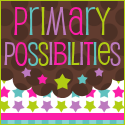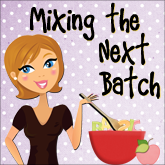A Tisket, A Tasket, Freebies for your Basket!
Several phenomenal teachers and bloggers are joining forces for an amazing bunny blog hop! As you follow us along the bunny trail, you will visit some of your
favorite blogs and discover a few new blogs too! Each with a fabulous
freebie just for you!
Thank you for hopping on over to my blog!
It is never too late for setting goals with your students. I know, most of us are entering the fourth quarter and you are probably thinking what good is setting a goal now going to do? A lot! I am actually really looking forward to the fourth quarter because we have finished our standardized testing in our state, which is going to allow me time to really focus on some the basic needs of my students, especially in reading.
This has been a really interesting year for me. This is only my third year of teaching and I am not a traditionally certified teacher. I came through an alternate certification program through The New Teacher Project. Every year has been like my first year of teaching because I have been in a completely new role. My first year I was a push-in/full inclusion special educator. Last year, I was a resource teacher and I also co-taught a language arts class. This year, I am a self-contained English Language Arts and Mathematics teacher as well as a co-teacher in a social studies class and a science class where the majority of the students on my caseload are taught. Since this is the first year where I am my students only teacher for language arts and math, it has involved a large learning curve. I am teaching grade level curriculum instead of just focusing on Individualized Education Programs (IEP) goals and objectives.
As part of my certification classes, I was required to use curriculum based measurement (CBM) diagnostics and assessments to track the progress of a set of my students as well as use the results of the diagnostic assessments to set goals for my students and then track their progress towards those goals. My first year of teaching I was working with first grade students with special needs and I didn't involve my students in the goal setting process at first. I saw minimal progress. Then half way through the year I decided to involve my students in the goal setting process. I let them know their previous scores and what goal I set for them for that week. After the assessment (I was working on reading fluency so I was using the Dynamic Indicators of Basic Ealry Literacy Skills, also known as DIBELS), the student and I would talk about whether or not they met the goal and together we would set a reasonable goal for the next progress monitoring assessment. I saw significant progress immediately!
Students want to be successful. Your tough students especially want to be successful even if it feels like the opposite. Many times your tough students and students with disabilities have experienced so much failure and negative feedback that they turn off. I have found that involving students in goal setting can be a powerful tool in helping to motivate your toughest students. By setting goals with input from students, you motivate them. Their competitive spirit starts to kick in and they want to beat their last score and maybe even beat the goal you have set together. Use this to your advantage!
I have continued to use DIBELS, which can be downloaded for free, but I have started to also use www.easycbm.com, a free site where you can also keep track of the students scores and look at graphs of progress made as well as have students take some of the tests online so that you do not need to personally score them. I love both of these sites. I really like the online part and the fact that www.easycbm.com has a math component. However, I think it is important for students to personally chart their progress. This allows them to see their progress over time and shows them that even small progress each time can lead to large gains. It also can be used to teach important math skills, like bar graphs, intervals, etc. By charting their progress, students stay invested and feel a sense of accomplishment.
In my next blog post, I will discuss the options for how often progress monitoring should be done. To help you get started, please enjoy the freebie below that I have used with my students for goal setting and charting progress. I hope you find it helpful! I usually print out both sheets and then staple them inside a file folder for each student. Have you ever involved your students in goal setting? How?
Thanks for stopping by and visiting! If you are new to my blog and liked what you see, don't forget to follow me. A Tisket, A Tasket, next up with a Freebie for your Basket is Stephany from Primary Possibilities. Hop on over!
Just in case you didn't join us from the beginning, here is an ordered list of all the participating blogs.
Stephany from Primary Possibilities
Sally from Elementary Matters
Lory from Fun for First
Linda from Primary Inspiration
Nicole from Mrs. Rios Teaches Second Grade
Brian from Hopkins' Hoppin' Happenings
Liz from The Happy Teacher
Jennie from JD's Rockin' Readers
Sarah from Learning is for Superstars
Teresa from Fun in K/1
Nikki from Teaching in Progress
Faith from Kindergarten Faith
Renee from Fantastic First Grade Froggies
Amy from Happy Teacher Heaven
Leah from Learn with Leah
Nicole from Teaching's a Hoot
Kristy from The Phonic's Phenomenon
Rich from Mr. Giso's Room to Read
Susanna from Whimsy Workshop
Amy from Motivate to Learn
Lola from Preschool Wonders
Kimberli from Mixing the Next Batch
Stephany from Primary Possibilities
Sally from Elementary Matters
Lory from Fun for First
Linda from Primary Inspiration
Nicole from Mrs. Rios Teaches Second Grade
Brian from Hopkins' Hoppin' Happenings
Liz from The Happy Teacher
Jennie from JD's Rockin' Readers
Sarah from Learning is for Superstars
Teresa from Fun in K/1
Nikki from Teaching in Progress
Faith from Kindergarten Faith
Renee from Fantastic First Grade Froggies
Amy from Happy Teacher Heaven
Leah from Learn with Leah
Nicole from Teaching's a Hoot
Kristy from The Phonic's Phenomenon
Rich from Mr. Giso's Room to Read
Susanna from Whimsy Workshop
Amy from Motivate to Learn
Lola from Preschool Wonders
Kimberli from Mixing the Next Batch





























